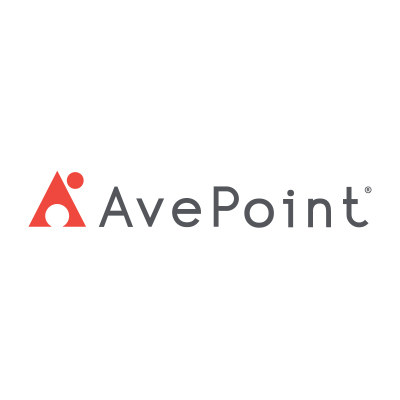Primis Financial Corp. (NASDAQ:FRST) Q1 2024 Earnings Call Transcript April 26, 2024
Primis Financial Corp. isn’t one of the 30 most popular stocks among hedge funds at the end of the third quarter (see the details here).
Operator: Thank you for standing by. My name is John, and I will be your conference operator for today. At this time, I would like to welcome everyone to the Primis Financial Corp. First Quarter Earnings Conference Call. All lines have been placed on mute prevent any background noise. After the speakers’ remarks, there will be a question-and-answer session. [Operator Instructions] I would now like to turn the call over to Matt Switzer, Chief Financial Officer. Please go ahead.
Matt Switzer: Good morning, and thank you for joining us for Primis Financial Corp’s 2024 first quarter webcast and conference call. Before we begin, please note that many of our comments during this call will be forward-looking statements, which involve risk and uncertainty. There are many factors that could cause actual results to differ materially from the anticipated results or other expectations expressed in the forward-looking statements. Further discussion of the company’s risk factors and other important information regarding our forward-looking statements are part of our recent filings with the Securities and Exchange Commission including our recently filed earnings release, which has also been posted to the Investor Relations section of our corporate site, primisbank.com.
We undertake no obligation to update or revise forward-looking statements to reflect changed assumptions, the occurrence of unanticipated events or changes to future operating results over time. In addition, some of the financial measures that we may discuss this morning are non-GAAP financial measures. How a non-GAAP measure relates to the most comparable GAAP measure will be discussed when the non-GAAP measure is used if not readily apparent. I will now turn the call over to our President and Chief Executive Officer, Dennis Zember.
Dennis Zember: Thank you, Matt, I appreciate that. And I appreciate everyone that’s joined our call today. I want to start by just saying that we’ve ploughed a lot of changes through our company over the last year. And I think it’s very satisfying to see how all of those changes have added up to such material improvement. When I add back the cost of the consulting services that were a unique expense this quarter, I’m showing that we improved pre-tax pre-provision by about $3.2 million compared to a year ago. That’s substantial improvement given just how serious the industry’s headwinds have been. I want to give a little more color on where this improvement’s come from. First, the core bank’s results are outstanding. Last year, the bank consolidated 25% of its branch infrastructure and still retained about 95% of those deposits.
Our core margin, which excludes the impacts of the third-party portfolio, came in at 3.03%, which is down just a touch from the fourth quarter but still above the 3% level. Driving these results is our core bank’s deposit franchise, which posted a cost of interest-bearing deposits of only 2.56% when you separate out the impact of the national deposit franchise. This cost of interest-bearing deposits is between 50 and 150 basis points lower than most of our regional peers and it speaks volumes about the quality of our customer base and our franchise. Our sales pipeline are heavily focused on the deposit side, where we are leveraging our advantages with V1BE and other technologies to win meaningful relationships. Secondly, Panacea earned about $1.6 million pre-tax in the quarter, which compares favorably to only $22,000 in the same quarter a year ago.
Their growth in loans and deposits over the past year has been remarkable, but especially deposits where they now fund about 30% of their entire balance sheet. Their pipeline on deposit growth is multiples stronger than their pipeline on loans. And it’s a direct result of the technology build-out that was made possible by their capital raise. We still have approximately $16 million after tax of market value and tangible book that we have not recognized, but expect to be able to as soon as we deconsolidate Panacea Financial Holdings, and recognize that improvement in book value. Our mortgage division, last year, recruited and built technology and secondary capabilities, and through all of that they tweaked or continue to tweak their operating expense burden.
This allowed mortgage to earn about $850,000 pre-tax in the first quarter, compared to a loss of $250,000 in the same quarter a year ago. That is an excellent result for the first quarter of the year, and for this industry in particular right now with 30-year rates at or above 8%. I want to keep recruiting in the division with just hitting singles and doubles to build our capacity and be ready for lower rates and the revenue boom that we expect when rates begin to fall. Lastly, our premium finance division finished the quarter with pre-tax income of about $1.3 million, up from about $850,000 in the same period a year ago. Driving those results are remarkably low operating expense burdens, managing the sector’s fastest and most digitally oriented process for the facilitators and customers.


This business is 100% cash secured with current production yields that are easily 100 basis points ahead of CRE. I think it says a lot about our company that we emerged through this last year this much stronger. Without question, it’s our multifaceted strategy is the reason for our success, where we are not fully dependent on just one region or just one concept to drive results. At the consolidated level, we are not looking to add any more strategies or complexities. We’re instead just looking to tweak and improve the slate that we already have and enjoy the better operating results that come from that success. All right, with that, I will turn it back to you, Matt.
Matt Switzer: Thank you, Dennis. I will now provide an overview of our results before we turn to Q&A, but as a reminder, the financial information we will discuss is preliminary pending our previously disclosed SEC pre-clearance process. These results incorporate consistent accounting methodologies as previous quarters for comparison purposes. As in previous quarters, these results include various adjustments related to a third-party managed portfolio that net across different line items. In the first quarter, $1.31 million related to this portfolio is included in interest income with an offsetting amount included in non-interest expense. In addition, $6.28 million of the provision for credit losses related to this portfolio with an offsetting amount included in non-interest income.
In the following discussion, references to core items we will exclude these amounts. In addition, our results this quarter continue to include the consolidation of Panacea Financial Holdings, or PFH. PFH pre-tax loss included in consolidated pre-tax income was $2 million. This is comprised of approximately $78,000 of non-interest income and $2.1 million of non-interest expense that’s included in our consolidated financial results. Results will be discussed excluding these amounts and relative to common share unless otherwise noted. With that, earnings available to common and earnings per diluted share for the first quarter were $6.3 million or $0.26 per diluted share, respectively. Adjusting for PFH and certain one-time items, core earnings were $7.2 million or $0.29 per share and up substantially from $0.23 in the year-ago period.
Total assets were $3.9 billion at March 31st, up slightly versus December 31st. Excluding PPP loans and loans held for sale, loan balances increased approximately 1% annualized after selling roughly $11 million of Panacea loans in the quarter. Deposits were $3.3 billion in Q1, up slightly from the fourth quarter, a net of approximately $70 million of deposits off balance sheet in the suite program at March 31st. Non-interest bearing deposits declined approximately 2% in the quarter to $463 million. Core net interest income excluding accounting adjustments from the third-party managed portfolio decreased $0.7 million to $27.0 million in Q1 due to one less calendar day and with increased loan yields only partially offsetting increased funding costs.
Core net interest margin decreased six basis points to 3.03% in Q1. Core yield on loans held for income increased nine basis points to 6.10%, while core yield on earning assets increased five basis points to 5.84%. Cost of deposits increased 13 basis points to 2.82%, while cost of funds increased 12 basis points to 2.97%. Excluding accounting adjustments, non-interest income was $8.3 million in Q1 versus $6.1 million in Q4, largely due to increased mortgage activity. Non-interest income this quarter also included $336,000 of gain on sale revenue from the Panacea loan sale. Non-interest expense was $26.5 million excluding PFH. Mortgage expenses included in that number were $5.1 million this quarter up from $4.8 million last quarter on higher volume.
Unfunded commitment reserve expense was $75,000 in the first quarter versus $299,000 last quarter. Core non-interest expense, excluding accounting adjustments, non-recurring items, and mortgage was $19.4 million in Q1 versus $18.7 million for the previous quarter and in line with expectations. More importantly, core non-interest expense was lower by approximately 10% this quarter versus the year-ago period, demonstrating the substantial strides we’ve made right-sizing the expense base while executing on our growth strategies. The core provision for credit losses was 1.6 million in Q1 versus a much smaller core provision of 100,000 approximately in Q4. Core net charge-offs were 900,000 down from $1.9 million last quarter. The net reserve billed in Q1 versus Q4 was influenced by softer forward economic forecasts when modeling our allowance under CECL, particularly for projected unemployment.
Lastly, operating return on average assets was 75 basis points in Q1. Mortgage was nicely profitable in the first quarter with a roughly $2 million pre-tax swing versus the fourth quarter, offsetting an increase in the core provision. Core pre-tax pre-provision earnings were $10.7 million in the first quarter, up 7% linked quarter and 44% versus the year-ago period. Core profitability remains solid even in this difficult operating environment, and we are optimistic we can continue improving core returns from here. With that, operator we can now open the line for Q&A.
See also
25 Countries with the Highest Informal Employment in the World and
Republicans are Buying These 10 Oil and Gas Stocks.
To continue reading the Q&A session, please click here.







